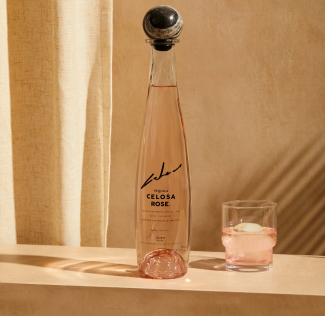Tequila is a journey through the rich culture and traditions of Mexico. This beloved spirit has won hearts worldwide, but its essence and soul are deeply rooted in the heart of Mexico. Let’s explore what makes Mexican tequila a treasure beyond the bottle.
What is tequila made from?
At the heart of every tequila is the blue agave plant. Picture vast fields under the Mexican sun, rows upon rows of spiky plants stretching toward the horizon. This isn’t just any plant; it’s the blue agave, the only plant that can be used to make real tequila. The core of the plant, known as the “piña” because it looks a bit like a pineapple, is where everything starts. It’s harvested, cooked, and then fermented to start its transformation into tequila. The process is a blend of art and science, a tradition passed down through generations.
The 3 main types of mezcal tequila
Both spirits come from the agave plant, but while tequila is made exclusively from blue agave, mezcal can be made from over 30 types of agave, giving it a wide range of flavors and aromas. Here are the three main types of mezcal you might come across:
- Espadín: This is the most common type of mezcal and is somewhat similar to the blue agave used in tequila. It offers a balance of sweetness and smokiness, making it a great introduction to mezcal tequila.
- Tobalá: Considered a delicacy, Tobalá agave grows wild and is smaller than Espadín. Mezcals made from Tobalá have a complex, refined taste, often with hints of fruit and a deeper, earthy undertone.
- Tepeztate: With agave plants that can take up to 25 years to mature, Tepeztate mezcal is known for its bold and distinctive flavor profile. It can be quite floral and spicy, with a long, lingering finish.
Production Process of Mexican Tequila

Turning agave to tequila is a fascinating process steeped in tradition. It starts with the harvest, where jimadores (agave farmers) use skill and precision to cut away the leaves, revealing the piña. These piñas are then transported to distilleries where they are cooked, often in large ovens or autoclaves. This cooking converts the agave’s natural sugars into fermentable forms.
After cooking, the piñas are crushed to extract the sweet agave juice. This juice is then fermented, a step where yeast is added to convert the sugars into alcohol. The magic of fermentation brings the liquid to life, creating a mildly alcoholic brew called “mosto.”
The next step is distillation, where the mosto is heated in stills, and the alcohol is vaporized and then condensed back into liquid form. This process is usually done twice to purify and strengthen the spirit.
Finally, the tequila is either bottled as a clear, pure “blanco” or aged in oak barrels to develop deeper flavors and colors, resulting in “reposado” or “añejo” tequilas. Each step in the production process adds character and depth, making Mexican tequila a drink with a story in every sip.
Types and Varieties of Mexican Tequila

Tequila is not a one-size-fits-all kind of spirit. It’s a symphony of flavors, ages, and processes that result in a range of types, each with its own personality. Broadly, tequila can be categorized into blanco, reposado, and añejo, with each type offering a distinct experience.
Explanation of the different types of tequila (blanco, reposado, añejo)
Blanco (or Silver) Tequila: Think of blanco tequila as the pure, unadulterated spirit of the agave plant. It’s bottled directly after distillation or rested for a very short time, resulting in a clear, vibrant tequila that showcases the natural flavors of the agave. Blanco is perfect for those who appreciate a crisp, fresh taste as lively as a Mexican fiesta.
Reposado (or Rested) Tequila: Reposado tequila takes a little nap in oak barrels, resting anywhere from two months to a year. This rest period allows the tequila to mellow and take on subtle flavors from the wood, resulting in a golden hue and a perfect balance between the agave’s natural tastes and the gentle spice of the barrel. Reposado is like the middle child, offering a harmonious blend of youth and maturity.
Añejo (or Aged) Tequila: Añejo is the elder statesman of the tequila world, aged gracefully in oak barrels for one to three years. This extended aging process transforms the tequila into a deep, amber-colored spirit with rich, complex flavors. Añejo tequila is a testament to the beauty of patience, delivering a smooth, luxurious experience reminiscent of a warm Mexican sunset.
Characteristics and flavor profiles of each type
Blanco: Fresh, vibrant, and slightly sweet with hints of citrus and herbal notes. It’s like tasting the raw essence of the agave plant.
Reposado: A delightful balance of sweetness and oak, with flavors of caramel, vanilla, and spices. It’s the perfect middle ground with a bit more body than blanco but retaining a hint of the agave’s freshness.
Añejo: Rich and complex, with a deep flavor profile that includes chocolate, coffee, dried fruits, and a pronounced oakiness. Añejo is for savoring slowly, letting each sip tell its story.
Importance of aging in oak barrels for certain tequila varieties
Aging tequila in oak barrels makes a big difference. It’s not just a small change; it makes the tequila very special. The barrels give the tequila new tastes and colors, making it more complex and interesting. For reposado and añejo tequilas, the barrels help the drink grow its own unique taste over time. The wood makes the tequila smoother, mixing the agave’s natural flavors with the barrel’s spicy notes. This aging is key to getting the deep flavors that make reposado and añejo tequilas stand out.
Mexican Tequila and its Cultural Significance
Tequila plays a crucial role in Mexico, influencing everything from social gatherings to cuisine and national identity.
Role of tequila in Mexican traditions and celebrations
In Mexico, tequila is a key part of many celebrations and family events. Whether it’s a birthday, a wedding, or a national holiday like the Day of the Dead, you’ll often find tequila there. People enjoy it in small glasses, sometimes neat, sometimes with a bit of salt and lime. It’s a way to bring everyone together, share stories, and enjoy the moment.
Tequila as a symbol of Mexican identity and heritage
Tequila is very special for Mexicans. It tells a story about Mexico’s past and the skill of making something valuable from the agave plant. This tradition goes back hundreds of years. For many, tequila shows the strength, history, and creativity of Mexico.
Influence of tequila in Mexican cuisine and cocktails
Tequila is also important in Mexican food and drinks. It’s not just for drinking straight; people use it to make tasty dishes and fun cocktails too. The most famous drink is probably the margarita, but there are many others. Chefs also cook with tequila, adding it to sauces or desserts for an extra kick. This shows how tequila can be both fun and a key ingredient in the kitchen.
Regulation and Certification of Mexican Tequila

How the Mexican government keeps tequila in check
In Mexico, making tequila is a serious business. The government has set up special rules to ensure that every step of the process, from growing the agave to bottling the spirit, is done right. This is important because it helps keep the quality high and protects the reputation of tequila worldwide. There’s a special group, the CRT (Tequila Regulatory Council), that works like tequila’s own police force, checking on distilleries to make sure they follow all the rules.
What it takes for tequila to be called “authentic”
For a tequila to be labeled as “authentic,” it must pass through a series of checks. It has to be made in certain parts of Mexico, mainly in the state of Jalisco and a few other areas. Also, it must be made 100% from blue agave. The CRT checks everything, from the fields where the agave grows to the factories where they turn it into tequila, making sure everything is up to standard. If a tequila passes all these tests, it gets a special seal that tells customers it’s the real deal.
Protecting tequila’s name across the world
“Tequila” is not just a name; it’s a title protected by law, similar to how only sparkling wine from a certain region in France can be called Champagne. This protection means that only tequila made in specific regions of Mexico can actually be called tequila. This rule helps to keep the tradition alive and ensures that when you buy a bottle of tequila, you’re getting a piece of Mexican heritage. The Mexican government and the CRT work together to protect this name, not just in Mexico but all around the world.
Mexican Tequila vs. Mezcal
How tequila and mezcal are alike and different
Both tequila and mezcal come from the agave plant, but not all agaves are created equal. Tequila is made only from blue agave, while mezcal can be made from over 30 types, including blue agave. This difference in ingredients is just the start. Tequila and mezcal are made in different parts of Mexico. While tequila is mostly from the area around Jalisco, mezcal is often produced in Oaxaca and a few other regions.
The way they’re made also sets them apart. Tequila makers steam the agave inside industrial ovens before distilling it in copper pots. Mezcal producers, on the other hand, often cook the agave in pit ovens lined with lava rocks, giving mezcal its distinctive smoky flavor. This means that while tequila has a smooth, sweet taste, mezcal brings a rich, smoky experience to your glass.
Alcohol Content and Health Considerations

Understanding tequila’s alcohol content
Tequila typically has an alcohol content of around 40% to 50%, similar to other spirits. This means it can pack a punch, and enjoying it responsibly is key. The effects of alcohol, including tequila, depend on how much you drink, how fast you drink it, and your own body. It can make you feel relaxed at first, but drinking too much can lead to not-so-great feelings the next day or more serious health issues over time.
Tips for Responsible Tequila Enjoyment
Enjoying tequila is part of many cultures, but knowing how to do so responsibly is important. Here are a few tips:
- Drink slowly to really savor the flavor.
- Have a glass of water between drinks to stay hydrated.
- Never drink and drive.
- Know your limits and stick to them.
Tequila in moderation as part of a balanced lifestyle
Like any alcohol, tequila is best enjoyed in moderation. This means having it occasionally and in small amounts. It can be part of a balanced lifestyle, adding a touch of celebration to special moments without harming your health.
Conclusion
From its rich history and cultural significance to the careful crafting and enjoyment, tequila is a spirit that embodies the essence of Mexico. Exploring different tequila can enhance your appreciation of this unique beverage, helping you understand the differences between tequila and mezcal, the importance of responsible drinking, and how to enjoy tequila as part of a balanced lifestyle. As we’ve seen, tequila is much more than just a drink; it’s a celebration of Mexican tradition and craftsmanship, offering a taste experience that’s both deep and delightful with Celosa Tequila.





